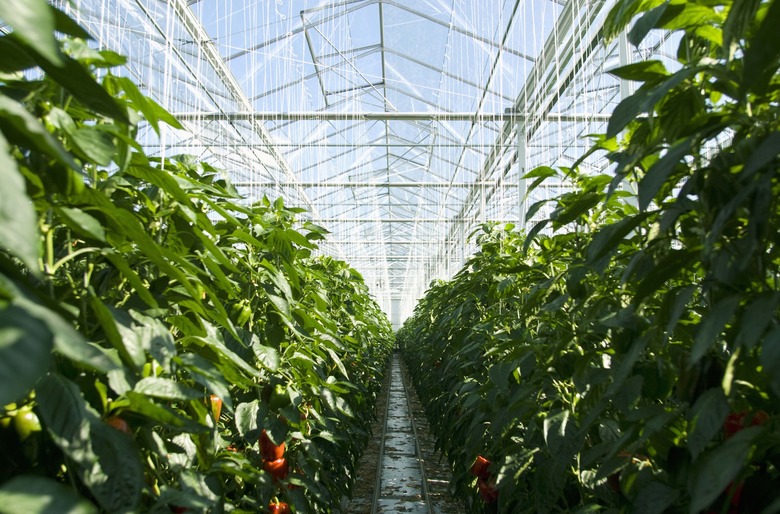How To Naturally Kill Fungus On Plants
Things Needed
-
Hydrogen peroxide
-
Water
-
Spray bottle
-
Baking soda
-
Canola oil
-
Dish soap
-
Sulfur dust
-
Cornmeal juice
With more than 8,000 known plant diseases caused by fungi, it's quite possible your indoor or outdoor plants may develop a fungal infection during some point in their life cycles. In fact, fungi are so prevalent and diverse that they even have their own kingdom (in terms of taxonomy). Often appearing as a white powder on the leaves of plants, fungi do not contain chlorophyll and therefore cannot make their own food. Instead, they feed on other organisms and cause them to decompose. Before you reach for a chemical fungicide that can cause your family, pets, and the environment harm, consider a natural alternative.
Step 1
Prepare a solution of 1 part 3-percent hydrogen peroxide and 9 parts water, in a spray bottle. Lightly spray the plants affected by the fungus. Hydrogen peroxide (H2O2) is naturally occurring and capable of overcoming and killing fungi.
Step 2
Fill a spray bottle with 1 part skim milk to 9 parts water. Spray the milk solution on the plants, liberally, to kill fungus. Milk has a positive effect on the immune system of plants, giving them the ability to fight the growth of fungus.
Step 3
Apply a baking soda solution to kill plant fungus. Pour 1 quart of water into a spray bottle with 1 teaspoon of baking soda. Add half a teaspoon of canola oil and a few drops of dish soap. Give the spray bottle a shake and spray the solution on the plants to rid them of fungus.
Step 4
Sprinkle sulfur dust on plants infected with fungus. Available in both liquid and powder forms, sulfur kills fungus and provides a protective barrier. Purchase sulfur dust in garden centers and plant nurseries.
Step 5
Pour a cup of cornmeal into a bucket and add a gallon of water. Stir the mixture to distribute the cornmeal evenly and allow it to soak for approximately 15 minutes. Place a metal strainer over a second bucket and pour the cornmeal mixture into the second bucket via the strainer. The strainer will catch the large cornmeal particles, allowing the cornmeal juice to flow into the second bucket. Pour the cornmeal juice into a spray bottle and apply it liberally to your plants.
Tip
Picking off fungus-infected leaves and discarding them can help stop the spread of plant diseases.
Warning
Do not use a garden hose to water plants. Pooling water that collects on leaves can lead to fungal problems. Use a soaker hose, instead. A soaker hose will provide a deep watering all the way down to the roots of your plants without unnecessarily wetting the leaves.
